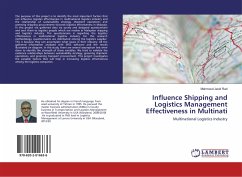The use of Interceptor on both planing or semiplaning crafts has been widespread for some time now. It has always been considered as an alternative to flaps and there is large evidence in literature about its higher effectiveness. The interceptor consists of a thin plate jutting out of the craft of a percentage generally between 1.5 and 4 of the LWL and it's located on the sternmost part of the bottom. Its role is to exert an overpressure able to lift the stern and consequently to change the trim. It's often used as regular device on crafts sailing at a low relative speed and as a movable device on speed boats. Although already quite widespread, there is no sound evidence in literature reporting a quantitative evaluation of the advantages of the use of Interceptors, in terms of hull resistance. The work carried out for this thesis conveys a great number of experimental data based on the variation of speed, trim, displacement, deadrise angle, considering different dimensions of the device. Furthermore, new geometries of interceptors are proposed that have lead to significant results.
Bitte wählen Sie Ihr Anliegen aus.
Rechnungen
Retourenschein anfordern
Bestellstatus
Storno








